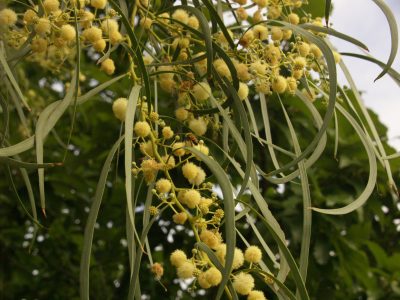What happened to my Mandevilla?
Thanks to Marie for this great question! Her Mandevilla is in a large pot, getting sun until about 2 in the afternoon. The leaves are yellowing and have some splotches, and some leaves are falling off.
Well, Marie, there are definitely a few issues here that we can help with. First, the amount of sunlight. Mandevilla are tropical species, and although they do need more sunlight than many tropicals, they still can’t take the searing intensity of our sun here in Central Texas, and more importantly, they struggle in the moisture-sucking heat that comes with it.
We have our Mandevilla in very bright shade in our Extension demonstration garden, and they perform very well. Leaves grown in shade tend to be darker green, so give your plant a good shearing, to remove the yellowing leaves and struggling growth, after you’ve moved it to a shadier spot. Then watch for the new growth, which should be slightly darker.
Some of the leaf damage here is sunburn, but most appears to be photooxidation. When sunlight is very intense, it can burn sensitive leaves, causing brown spots, or sunburn. But before the leaf completely burns, you may notice yellowing leaves, which is a sign that the heat of the sun has denatured the chlorophyll. And since chlorophyll is a green pigment, less chlorophyll means less green. The smaller brown splotches here are likely secondary issues, possibly fungal, which move in once the plant is stressed and vulnerable.
So Marie, move those containers to where they won’t get direct sun any later than mid-morning, and shear the plant to about 6 inches to force it to produce new, healthier growth. You’ll see improvement in no time.

 Ida Bujan
Ida Bujan Marianna Trevino-Wright
Marianna Trevino-Wright Daphne Richards
Daphne Richards
 Trisha Shirey
Trisha Shirey